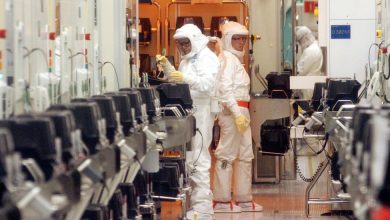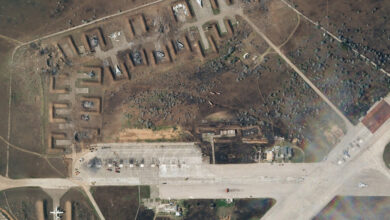Donald Pinkel, Who Developed a Cure for Childhood Leukemia, Dies at 95

Dr. Donald Pinkel, a pediatrician who, starting in the early 1960s, developed an aggressive treatment for childhood leukemia that transformed the disease from a virtual death sentence to one that almost every patient survives, died on Wednesday at his home in San Luis Obispo, Calif. He was 95.
His son John confirmed the death.
Acute lymphocytic leukemia, a type of cancer that overwhelms the body with misshapen white blood cells, was once the No. 1 killer of children in the United States between the ages of 3 and 15, causing about 2,000 deaths a year. It had a 96 percent fatality rate — and doctors say that number might have been low, because the remaining 4 percent of cases were probably misdiagnoses.
When Dr. Pinkel began his research as a pediatrician in Buffalo, in the 1950s, there were already several medications that could push the disease into remission. But almost invariably the cancer would return. Doctors would then try a different drug, only to get the same results.
“At that time, with A.L.L., the idea was to try to prolong life in comfort — that was it,” Dr. Pinkel told Smithsonian magazine in 2016. “We called it ‘palliation.’ No one thought you were going to ‘cure’ anybody. That was almost a forbidden word.”
In 1961, shortly after moving to the newly founded St. Jude Children’s Hospital in Memphis — he was its chief executive, medical director and first employee — he set on a radically different course. Instead of one drug or treatment at a time, he would use them all, pushing patients’ bodies to the limit in the hope that the cancer would die first.
“Dr. Pinkel and my father had the same unyielding hope and were equally audacious in their determination that childhood leukemia could be vanquished,” the actress Marlo Thomas, whose father, the comedian and actor Danny Thomas, founded St. Jude, said in a statement.
Dr. Pinkel combined multiple chemotherapy drugs to drive the disease into remission. Then, when the patients were healthy enough, he and his team bombarded their skulls with radiation and injected drugs directly into their spinal columns, attacking places where Dr. Pinkel suspected the cancer was hiding during remission.
This would go one for months, even years. Children would lose their hair, their appetites. Some died. But by 1968 Dr. Pinkel’s regimen, which he called Total Therapy, was achieving remarkable results: Out of 31 patients in one study, 20 were in complete remission after three and a half years.
A decade later, after continued refinements to the protocol, the five-year survival rate was up to 80 percent. Today, still using Dr. Pinkel’s framework, it is 94 percent.
“He really is the man that cured leukemia,” James R. Downing, the current president of St. Jude, said in a phone interview.
Donald Paul Pinkel was born in Buffalo on Sept. 7, 1926. His father, Lawrence, was a hardware salesman, and his mother, Anne (Richardson) Pinkel, was a homemaker.
He joined the Navy in 1944 and went to Cornell University as part of the service’s V-12 program, which gave college coursework to promising recruits. There he developed an interest in biology and medicine; after returning home and graduating in 1947 from Canisius College, in Buffalo, he went directly to medical school at what is now the University at Buffalo, covering some of the costs by joining the Army Reserve Medical Command.
He quickly found his calling in pediatrics, and childhood cancer in particular. At the time it was considered a lost cause — a field of research so forlorn that one mentor said he would be throwing away his career.
Dr. Pinkel persisted, earning his medical degree in 1951 and holding a series of residencies and fellowships in pediatrics and oncology across the Northeast. He was preparing for another fellowship, in New York City, when he was called up by the Army and sent to a military hospital outside Boston.
A polio epidemic was in full swing in the region, and Dr. Pinkel, overworked as the hospital’s only pediatrician, soon caught the disease himself. It took him a year to recover — coincidentally just as Jonas Salk’s new polio vaccine was being rolled out, turning what had once been a scourge of childhood into a largely preventable disease.
Dr. Pinkel dreamed of doing the same with leukemia. He worked with the famed oncologist Sidney Farber in Boston and then returned to Buffalo, where he opened a pediatrics department at the Roswell Park Cancer Institute (now the Roswell Park Comprehensive Cancer Center) and worked alongside James Holland, another pioneer in cancer research.
One day in 1961 Dr. Pinkel got a call asking if he would be interested in a job as the head of St. Jude. During a period of emotional and professional distress, Mr. Thomas, the hospital’s founder, had prayed to St. Jude, the patron saint of lost causes, for help. When he recovered, he decided to build a hospital to help children in similarly dire straits.
Dr. Pinkel was tired of the cold, wet Buffalo winters, but he wasn’t sure about the offer: Memphis was a segregated Southern city, and many in the medical community said Mr. Thomas’s status as a television comedian made it hard to take the idea seriously.
Still, he met with several members of the hospital board and came away impressed. They, like him, believed in focusing their efforts on childhood cancer, and they agreed that the hospital should be need-blind, and that both its staff and its patient population should be completely desegregated.
Dr. Pinkel drove to Memphis in his Volkswagen Beetle, arriving to find a hole in the ground where the hospital would one day be. He made himself an integral part of the planning process, insisting, among other things, that the hospital have integrated bathrooms.
He also insisted on as much common space as possible, including a single cafeteria for all —- doctors, scientists and administrators — to encourage creative cross-pollination. He also opened the cafeteria to patients and their families, to give staff members a visual reminder of their collective mission.
“It was a civil rights culture,” Jackie Dulle, one of his first executive assistants, said in a phone interview. “He wanted everyone to be equal.”
With Mr. Thomas’s blessing and the board’s support, Dr. Pinkel hired the best researchers and doctors he could find, attracting them with his bold vision and St. Jude’s progressive culture. His wife, Marita (Donovan) Pinkel, would help by hosting recruits at their house and lobbying them over dinner.
That marriage ended in divorce. Along with his son John, Dr. Pinkel is survived by his second wife, Cathryn Howarth; six daughters, Rebecca Amthor, Nancy Pinkel, Mary Pinkel, Noelle Greene, Sara Pinkel and Ruth Pinkel; two sons, Thomas and Michael; his sister, Eileen Pinkel; 16 grandchildren; and five great-grandchildren. Another son, Christopher, died before him.
Dr. Pinkel and his team found early success with his Total Therapy approach but kept the results unpublished until the late 1960s, to ensure that the data was solid. Still, when he did publicize his findings, he was met with skepticism, even derision; other doctors said he was cruel to give patients and their families hope in the face of what everyone knew was an incurable disease.
But after he invited a few of his most prominent critics to visit the hospital, they changed their tune; one of them, Alvin Mauer of Cincinnati Children’s Hospital, took over as the president of St. Jude when Dr. Pinkel left.
During their studies, Dr. Pinkel and his colleagues noticed something strange: The children from lower-income families, most of them Black, tended to have worse results than children from higher-income families. After investigating, they concluded that pervasive malnutrition was to blame.
Dr. Pinkel helped launch a program to provide families with supplemental nutrition. That effort provided the model for the federal government’s Special Supplemental Nutrition Program for Women, Infants and Children, known as W.I.C.
But those efforts put Dr. Pinkel at odds with some in the city’s white leadership, who felt he was giving Memphis a bad name. Several of the hospital’s donors threatened to withdraw support if he continued.
Dr. Pinkel left St. Jude in 1973. He later worked at children’s hospitals in Wisconsin, California, Pennsylvania and Texas before retiring in 1994. He moved to San Luis Obispo to be near some of his children, and later taught as an adjunct at California Polytechnic University.
He won most of the major awards given in the medical field. In 2017 St. Jude named its new research tower after him, a testament to his persistence in the face of what everyone else said was an impossible task.
“I’m a very stubborn person,” Dr. Pinkel told Smithsonian. “A coach once told me, ‘Never run from a fight — the farther you run, the harder it is to fight back.’”





